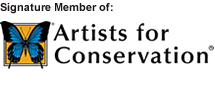 |

         
 

Members
Login
|
 Murray Earl Phillips
AFC, M.A. M.Div. Murray Earl Phillips
AFC, M.A. M.Div.

Painting the western wilderness |
|


|
|
| |
One does not have to be with Murray for very long before one senses his deep passion for the wilderness. His art stands in a rich tradition of Canadian art that has a strong connection to the land. Approximately four months of every year is spent in nature where he paints on location, to capture the untamed beauty around him. The Kitlope Valley, Haida Gwaii, the Bugaboo Mountains, Kananaskis, Waterton, Banff and Jasper have all been a part of this painting odyssey. Although the focus has been primarily on the western wilderness there has also been painting excursions into Wales and England by canal boat as well as trips into Algonquin Park the place of initial inspiration for Tom Thomson and the Group of Seven.
Murray feels most at home in the wilderness and is passionate in his commitment to capture on canvas the elusive beauty that frequently lies hidden in isolated areas. “We are losing the wilderness not primarily through pollution or over population but, first of all, because of disinterest and neglect. We simply are unaware of what a treasure this is and we have little interest or knowledge of the wilderness and its inhabitants”. It is Murray’s deep desire to awaken a yearning to reconnect with the wilderness. “The wilderness has profound lessons for us if we will make the effort to slow our pace and be silent and listen; just go into the wilderness and start to listen.”
Although he has been painting for over 40 years, much of Murray’s life has been lived in the halls of academia where he holds graduate degrees in Theology and Cultural Anthropology. For over 20 years, he taught in a variety of colleges and universities. He still is in much demand as a speaker and articulate advocate for reconnecting with the wilderness. He has many interests including sailing, canoeing, and classical guitar but an abiding love has been his desire to paint. “There is in my soul an intense urgency to paint, as if something terribly important needs to be communicated, and I can only say it with brush and canvas. Sometimes the soul’s only instruments are brush, canvas, and paint.”
More recently Murray was invited to participate with a select group of artists who portrayed the British Columbia Raincoast to draw attention to the magnificence and rich diversity of this area. They advocated an Oil Free Coast protesting the proposed pipeline and the risk of supertankers plying the narrow and dangerous channels. Their paintings and artwork were included in the book Canada's Raincoast at Risk which is already in its second printing.
In June of 2013, Murray's beloved wife of 46 years passed away of cancer. Betty had been a great support to him as an artist and also as a wise and gentle companion. She was well known in the art community for her graciousness and support for Murray. In Murray's words, "I have lost a wonderful companion and my soulmate but the things we held to as important remain and I find great solace in my art and in my faith. Although each journey is unique, I have a new appreciation for the struggle people go through with grief and loss. I am so grateful for the support of friends and fellow artists."

|
Support for Conservation:
INTO THE WILDNESS: WHY I PAINT
We isolate ourselves in layers of protection from the wildness. Even our camping is hardly a foray into wildness. It has a certain safety and sterility to it. We pack our belongings into our trailers and head to the country for the weekend to set up temporary residences along with other urbanites in the great outdoors. Tents and trailers hastily assemble on Friday evening and set up temporary nomadic villages that disassemble Sunday and move back to the city. Wildness is rarely unseen and largely unknown - it remains a stranger and therefore frequently frightening. Yet, it is reflective of our soul’s craving that is so essential to our being. For many wilderness has become artificial and the city is reality - wildness is abandoned for the false security of the cloistered neighbourhood.
For me as I grow older the urban world is increasingly foreign. I find it necessary to imbibe regularly from the wildness in our world. I am not immune to creature comforts but I need to move beyond that at times and experience the wildness that is still there. We do not often go into the wilderness to find the wildness - we go onto the wilderness. The wilderness becomes our playing field in which we engage in our “extreme” sports. We tear over our lakes in high powered thundering boats or seadoos. Snowmobiles try to outdo one another in speed and telemarking. We “conquer” mountains by climbing them. But, the wildness remains unseen and unnoticed. The wildness is subtle and secretive revealing her beauty to the patient and determined suitor. Wildness is the soul of the wilderness - it is not a place as much as an experience. It is the art and spirit that is frequently found in the most elusive and isolated places. It most often comes to us when we are quiet and alone in an unexpected time. It withdraws from noise, clamour, and busyness.
We live in a time when people are increasingly nervous about quietness. We are bombarded with messages and the media every day. We have been seduced by noise and clamour. We want to be endlessly entertained. In his excellent book Last Child in the Woods Richard Louv writes about a commercial on television which advertises the advantage of a particular model of Minivan in which children are entertained in the back seat by videos that can be seen on the back of the front headrest. The commercial shows these children immersed in the viewing of this video while driving through spectacular mountain scenery which they never observe. We are so enamoured with the media that we do not see the beauty around us.
My father was a minister and his last parish was in the heart of the inner city in downtown Brooklyn, New York. His church was in the ghetto with the Black Community on one side of the church and the Puerto Rican Community on the other. In the summer he operated a day camp which took children from the ghetto out to the country. They were in shock, it was a world they never had seen in reality. Some children saw their first tree. The ghetto where they lived did not have trees and they never strayed far from home. The risk was too high.
I was walking one day with some children in a park near my home and I suggested that we see how many different birds we could identify on the trail. No sooner had I said that than a robin landed on the path in front of me. I said “Look, there’s a robin”. A ten year old said, “What is a robin?” I was surprised that even something as common as a robin was unknown. What is happening here is significant. I do not think the initial threat to our wilderness is overhunting or pollution. We lose it first from neglect and lack of knowledge. With no naming of what is there and no knowledge we simply do not show up - we forfeit our stewardship.
Naming is an important process. In ancient writings, naming was the first task given to people. It is still the first task. When my father was a child being raised in southern Ontario his mother told him not to name the farm animals because, she said, it made it hard to eat supper. Sounds funny, but it is true. If you name the young calf or the chickens you change the nature of your relationship and when it came time to butcher the animal it was more difficult. We need to start again to name and to identify what is there; in that process we change the nature of our relationship.
So it is with my painting. I view my art as a language, an effort to translate my experience in the wilderness. It is an attempt to communicate wildness in its many forms; to narrate my encounter with wildness. I am trying to seduce you into experiencing the wilderness. It is a story. But I only get to tell half the story, I never write the conclusion. That is up to you. When you observe the painting and say: “That reminds me of the time....”, you pick up the story and carry it on. I spend approximately 4 months of every year in the wilderness, sometimes in isolated places. I live there and paint there. These are not “plein aire” paintings done in one sitting. They are often large canvases (24” x 36”) done on location over several weeks. I try to catch the elusive wildness of the place. I try to communicate to you the beauty and secretive quality of wildness. Sometimes, every once in a while, I get glimpses of something so precious, fleeting, and wild that I am moved to tears. It seems as if I am walking on the still wet paints of a Master Artist so far beyond me in ability and resources. I stand in silent awe and adoration. It is a humbling experience. I am left with my paints and my brush to tell you what happened. That is why I paint.
|
|
|
| |
 |
|
|
 |
 |
|

|
|
|
All rights reserved. All images and text © Copyright 2024 Murray Phillips - Member of the Artists for Conservation Foundation (Formerly
the Worldwide Nature Artists Group) www.natureartists.com.
This site represents the original artwork (nature art and wildlife art) of nature
artist and wildlife artist of Murray Phillips and is protected by international copyright laws. Use
of nature art, wildlife art or any other images or text from this site, requires
permission in writing from Murray Phillips (Murray Phillips Art).
This site is part of the Artists for Conservation (AFC) Web site. (Wildlife
Art - Nature Art - Conservation) Artists for Conservation is an international, non-profit organization dedicated to
nature art, wildlife art and conservation. On this site you will find world-class
nature art and wildlife art by today's leading nature artists & wildlife artists.
The AFC site is the Web's premier location for nature art, wildlife
artists
All content appearing in pages featuring Murray Phillips is the sole responsibility of Murray Phillips. The opinions expressed on these artists' pages are those of Murray Phillips and do not necessarily reflect those of the Artists for Conservation
Foundationi (AFC).
|




